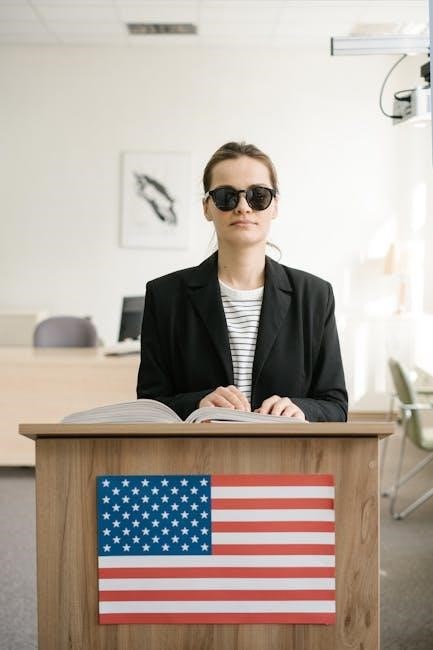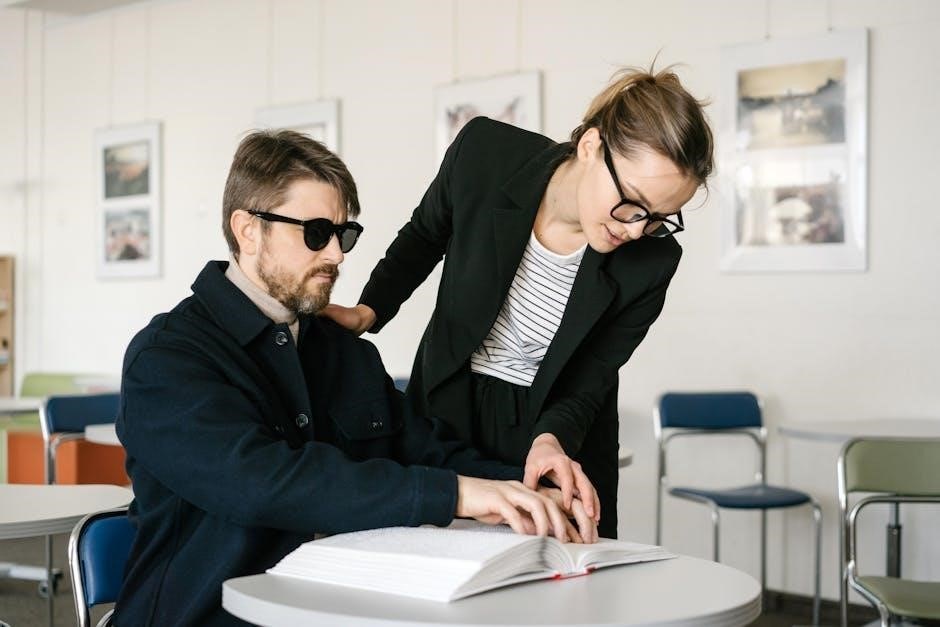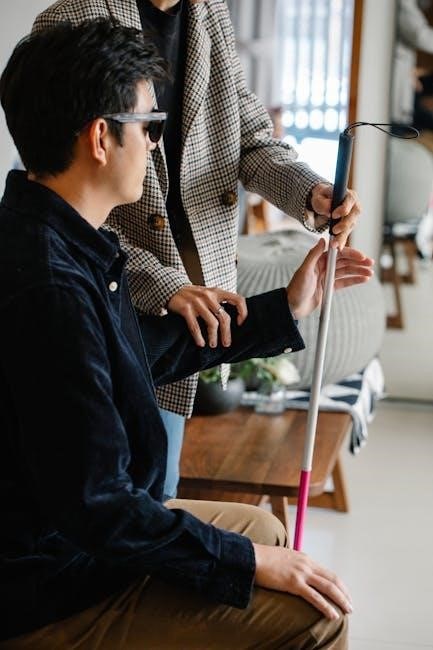guide for blind runners
Guide running introduces visually impaired athletes to running with a guide’s assistance, using verbal cues and physical guidance,
- enabling them
to participate in the sport, promoting independence and confidence, through partnered training and support․
Benefits of Guide Running
Guide running offers numerous benefits for visually impaired athletes, including increased independence, confidence, and social interaction․ Through partnered training, athletes can participate in the sport, achieving their fitness goals and improving overall well-being․ The guide runner provides verbal cues and physical guidance, enabling the athlete to navigate the running route safely․ This partnership not only enhances the athlete’s running experience but also fosters a sense of community and belonging․ Additionally, guide running promotes emotional and mental well-being, as athletes develop trust and reliance on their guides․ The benefits of guide running extend beyond the physical aspects, as athletes can experience personal growth, empowerment, and a sense of accomplishment․ By participating in guide running, visually impaired athletes can overcome barriers and achieve their full potential, leading to a more active and fulfilling lifestyle․ With the support of guides, athletes can push beyond their limits, exploring new running routes, and setting goals for themselves․ Overall, guide running provides a unique and rewarding experience, offering a range of benefits that can positively impact the lives of visually impaired athletes․ Guides play a crucial role in this process, providing the necessary support and guidance to enable athletes to succeed․

Types of Visual Impairment
Visual impairments include partial sight and
- total blindness
, affecting runners’ abilities to navigate routes, requiring guides’ assistance and support to participate in the sport safely and confidently always with proper training․
Guide Runner Basics
Guide running involves a guide and a visually impaired runner working together as a team, with the guide providing verbal cues and physical guidance to enable the runner to participate in the sport․ The guide’s role is to assist the runner in navigating the route, avoiding obstacles, and maintaining a steady pace․ This is achieved through a combination of verbal communication, such as calling out directions and warning of hazards, and physical guidance, such as holding a tether or providing arm guidance․ Guides must be aware of the runner’s abilities and needs, and be able to adapt their guidance accordingly․ They must also be knowledgeable about the route and any potential hazards, such as uneven terrain or obstacles․ By working together, the guide and runner can build trust and develop a strong partnership, enabling the runner to participate in the sport safely and confidently․ The guide runner basics include understanding the different types of visual impairments, learning effective communication techniques, and developing the skills and knowledge needed to provide effective guidance and support․ This information is available online, providing a valuable resource for guides and runners․ Effective guide runner basics are essential for a successful and enjoyable running experience․

Supporting Blind and Partially Sighted Runners
Organizations and volunteers provide support through training and
- guidance
, enabling blind and partially sighted runners to participate in the sport, promoting independence and confidence, with a focus on inclusivity and accessibility․
Guide Running Workshops and Training

Guide running workshops and training programs are designed to educate and equip guides with the necessary skills and knowledge to support blind and partially sighted runners․ These workshops typically cover topics such as types of visual impairment, communication techniques, and safety guidelines․ Through a combination of theoretical and practical training, guides learn how to provide effective support and guidance to visually impaired athletes․ The England Athletics Sight Loss Awareness and Guide Running Workshop is an example of such a program, which provides runners, leaders, coaches, and volunteers with information and experience about supporting blind and partially sighted people to run․ The workshop covers a range of areas, including types of visual impairment, top tips, and safety for guide running․ By participating in these workshops and training programs, guides can gain a deeper understanding of the needs and challenges faced by visually impaired athletes, and develop the skills and confidence to provide high-quality support․ Overall, guide running workshops and training programs play a critical role in promoting inclusivity and accessibility in the sport of running, and enabling blind and partially sighted athletes to participate fully and safely․ With the right training and support, guides can make a positive impact on the lives of visually impaired athletes, and help them to achieve their full potential․

Becoming a Guide for Visually Impaired Athletes
Becoming a guide for visually impaired athletes involves training and
- commitment
to support blind runners, enabling them to participate in the sport with confidence and independence, through
partnership
and trust․
Essential Information for Guides
As a guide for visually impaired runners, it is crucial to understand the importance of clear communication and trust between the guide and the athlete․ Guides should be aware of the athlete’s abilities, needs, and preferences to provide effective support․ The guide’s role is to provide verbal cues, physical guidance, and encouragement to enable the athlete to participate in the sport with confidence and independence․ Guides should also be knowledgeable about the route, terrain, and weather conditions to ensure a safe and enjoyable experience for the athlete․ Additionally, guides should be trained in basic first aid and emergency procedures․ Guides can access online resources, such as training manuals and videos, to learn more about their role and responsibilities․ By working together, guides and athletes can build a strong partnership and achieve their goals․ Guides play a vital role in enabling visually impaired athletes to participate in running and other sports, promoting independence, confidence, and overall well-being․ With the right training, support, and attitude, guides can make a significant difference in the lives of visually impaired athletes․ Guides should also be respectful of the athlete’s boundaries and needs, and prioritize their safety and well-being above all else․

